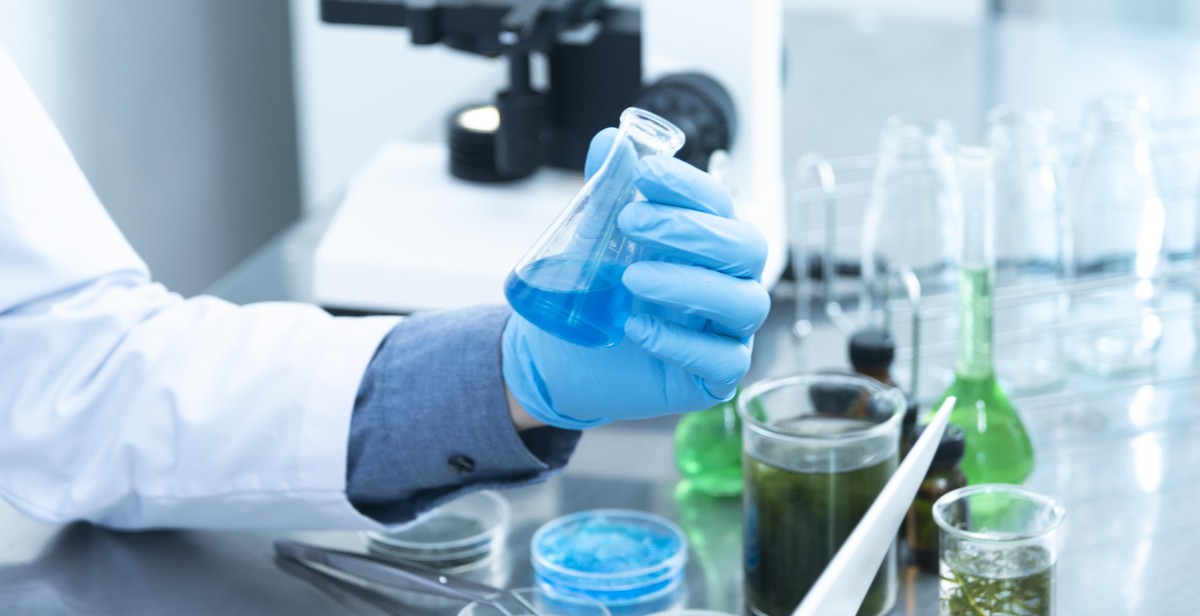How to Understand Vaccine Ingredients: Exploring the Components of Vaccines
As a professional article writer and content creator, I have had the opportunity to research and write about various topics. However, one topic that is particularly important to me is vaccines and their ingredients. With the ongoing COVID-19 pandemic, vaccines have become a hot topic, and understanding their ingredients is more important than ever.
Why Understanding Vaccine Ingredients Is Important
Vaccines are designed to protect us from infectious diseases by stimulating our immune system to produce a response. However, vaccines are made up of various components, including antigens, adjuvants, preservatives, and stabilizers. While these ingredients are safe and necessary for the vaccine to be effective, some people may have concerns about their safety.
By understanding vaccine ingredients, people can make informed decisions about their health and the health of their loved ones. It can also help to dispel any myths or misinformation surrounding vaccines and their ingredients.
In this article, I will explore the different components of vaccines, their purpose, and their safety. By the end of this article, you will have a better understanding of what goes into vaccines and why they are so important for public health.

What are Vaccines Made Of?
Vaccines are made of several components that work together to stimulate an immune response in the body. These components can vary depending on the type of vaccine, but most vaccines contain the following basic components:
1. Antigens
Antigens are the substances in vaccines that stimulate the body’s immune system to recognize and fight off specific pathogens, such as viruses or bacteria. Antigens can be whole or partial pathogens, weakened or dead pathogens, or pieces of pathogens, such as proteins or sugars.
2. Adjuvants
Adjuvants are substances added to some vaccines to enhance the body’s immune response to the antigen. Adjuvants work by stimulating the immune system to produce more antibodies and activating immune cells that can destroy pathogens.
3. Preservatives
Preservatives are added to some vaccines to prevent contamination by bacteria or fungi. Preservatives are only used in multi-dose vials of vaccines, as single-dose vaccines do not require preservatives.
4. Stabilizers
Stabilizers are added to some vaccines to prevent the antigen from breaking down or losing its effectiveness over time. Stabilizers can also help the vaccine maintain its potency during storage and transportation.
Common Vaccine Ingredients and Their Purposes
Here are some of the most common vaccine ingredients and their purposes:
| Ingredient | Purpose |
|---|---|
| Aluminum salts | Adjuvant |
| Egg protein | Antigen |
| Formaldehyde | Preservative |
| Gelatin | Stabilizer |
| Thimerosal | Preservative |
It is important to note that all vaccine ingredients are carefully tested for safety and effectiveness before they are approved for use in vaccines. The benefits of vaccination far outweigh the risks, and vaccines have been proven to be one of the most effective ways to prevent infectious diseases.

Understanding Vaccine Ingredients: A Closer Look
Before receiving any vaccine, it’s important to understand the ingredients included in it. Vaccines typically contain a combination of adjuvants, preservatives, stabilizers, antibiotics, and growth mediums. Let’s take a closer look at each of these components:
Adjuvants
Adjuvants are substances added to vaccines to enhance the body’s immune response to the vaccine. They work by stimulating the immune system and helping it to recognize and respond to the vaccine’s components. Commonly used adjuvants include aluminum salts and squalene.
Preservatives
Preservatives are added to vaccines to prevent bacterial and fungal growth, which can spoil the vaccine. Thimerosal is a commonly used preservative in multi-dose vaccines. However, many single-dose vaccines do not contain preservatives.
Stabilizers
Stabilizers are added to vaccines to maintain their effectiveness and prevent them from breaking down over time. Commonly used stabilizers include sugars and gelatin.
Antibiotics
Antibiotics are added to some vaccines to prevent bacterial contamination during the manufacturing process. However, some people are allergic to certain antibiotics, so it’s important to check the vaccine ingredients before receiving a vaccine if you have a known antibiotic allergy.
Growth Mediums
Growth mediums are used to cultivate the viruses or bacteria used in the vaccine. Commonly used growth mediums include chicken eggs, yeast, and mammalian cells. However, some people may be allergic to certain growth mediums, so it’s important to check the vaccine ingredients before receiving a vaccine if you have a known allergy.
| Component | Examples |
|---|---|
| Adjuvants | Aluminum salts, squalene |
| Preservatives | Thimerosal |
| Stabilizers | Sugars, gelatin |
| Antibiotics | Neomycin, streptomycin |
| Growth Mediums | Chicken eggs, yeast, mammalian cells |

Controversies Surrounding Vaccine Ingredients
Despite the overwhelming scientific evidence proving the safety and efficacy of vaccines, there have been controversies surrounding some of the ingredients used in vaccines. The most commonly debated vaccine ingredients include thimerosal, aluminum, and formaldehyde.
Thimerosal
Thimerosal is a mercury-containing preservative that was used in some vaccines to prevent bacterial and fungal contamination. However, due to concerns about the potential neurotoxic effects of mercury, thimerosal was removed from all childhood vaccines in the United States in 2001, with the exception of some multi-dose vials of flu vaccine.
Despite the removal of thimerosal from most vaccines, some people still believe that it is responsible for causing autism. However, numerous studies have found no link between thimerosal-containing vaccines and autism.
Aluminum
Aluminum is used as an adjuvant in some vaccines to enhance the body’s immune response. However, some people are concerned about the potential neurotoxic effects of aluminum, particularly in infants and young children.
While it is true that aluminum can be toxic in high doses, the amount of aluminum in vaccines is well below the safe limit established by the World Health Organization. Additionally, numerous studies have found no evidence that the aluminum in vaccines causes any harm.
Formaldehyde
Formaldehyde is used in some vaccines to inactivate viruses and bacteria. However, some people are concerned about the potential carcinogenic effects of formaldehyde.
While it is true that formaldehyde can be carcinogenic in high doses, the amount of formaldehyde in vaccines is extremely small and poses no risk to human health. Additionally, formaldehyde is produced naturally by the human body and is present in many everyday products, such as fruits and vegetables.
- In conclusion, while there have been controversies surrounding some vaccine ingredients, scientific evidence overwhelmingly supports the safety and efficacy of vaccines.

Are vaccine ingredients safe?
One of the most common concerns about vaccines is the safety of their ingredients. It is natural to wonder if the substances that are injected into our bodies are safe and if they can cause harm. However, it is important to note that vaccines go through rigorous safety testing and are regulated by various health agencies before they are approved for use.
Safety testing and regulation
Before a vaccine is approved for use, it goes through extensive testing to ensure its safety and efficacy. The testing process involves several stages, including laboratory testing, animal testing, and clinical trials. In the clinical trial phase, the vaccine is tested on humans to determine its safety and effectiveness. These trials involve thousands of participants and are closely monitored by regulatory agencies such as the FDA.
Once a vaccine is approved, it continues to be monitored for safety through a post-marketing surveillance system. This system allows health agencies to track any adverse reactions and take appropriate action if necessary.
Possible side effects and risks
While vaccines are generally safe, like any medication, they can have side effects. The most common side effects of vaccines are mild and include soreness at the injection site, fever, and fatigue. These side effects usually go away on their own within a few days.
In rare cases, vaccines can cause more serious side effects. However, the risk of these side effects is much lower than the risk of getting the disease the vaccine is designed to prevent. For example, the measles vaccine can cause a severe allergic reaction in about one in a million people. However, the disease itself can cause serious complications and even death.
| Common vaccine ingredients | Purpose |
|---|---|
| Aluminum salts | Helps the vaccine stimulate an immune response |
| Formaldehyde | Used to kill viruses and bacteria in the vaccine |
| Thimerosal | Preservative that prevents contamination of the vaccine |
The bottom line is that vaccines are safe and effective at preventing diseases. While they can have side effects, these are usually mild and go away on their own. The benefits of vaccines far outweigh the risks, and they are an important tool in protecting public health.

Conclusion
Understanding vaccine ingredients is crucial for making informed decisions about vaccination. While some people may have concerns about the safety of certain ingredients, it is important to remember that vaccines undergo rigorous testing and approval processes before they are made available to the public.
It is also important to note that the benefits of vaccination far outweigh any potential risks associated with vaccine ingredients. Vaccines have been instrumental in preventing the spread of infectious diseases and have saved countless lives.
When considering vaccination, it is always a good idea to consult with a healthcare professional and ask any questions you may have about vaccine ingredients and their safety. This can help alleviate any concerns you may have and provide you with the information you need to make an informed decision.
- Remember that vaccines are safe and effective ways to protect yourself and others from infectious diseases.
- Don’t be afraid to ask questions and seek out reliable sources of information about vaccines and their ingredients.
- Stay up-to-date on recommended vaccination schedules to ensure you and your loved ones are protected.
| Ingredient | Function |
|---|---|
| Antigens | Stimulate the immune system to produce an immune response to a specific disease |
| Adjuvants | Enhance the immune response to antigens |
| Preservatives | Prevent contamination of vaccines by bacteria or fungi |
| Stabilizers | Help maintain the effectiveness of vaccines during storage and transport |
References:
- Centers for Disease Control and Prevention. Vaccine Ingredients. Retrieved from https://www.cdc.gov/vaccines/vac-gen/additives.htm
- World Health Organization. Vaccine Safety. Retrieved from https://www.who.int/vaccine_safety/initiative/tools/vaccinfosheets/en/
- American Academy of Pediatrics. Vaccine Safety: The Facts. Retrieved from https://www.healthychildren.org/English/safety-prevention/immunizations/Pages/Vaccine-Safety-The-Facts.aspx
